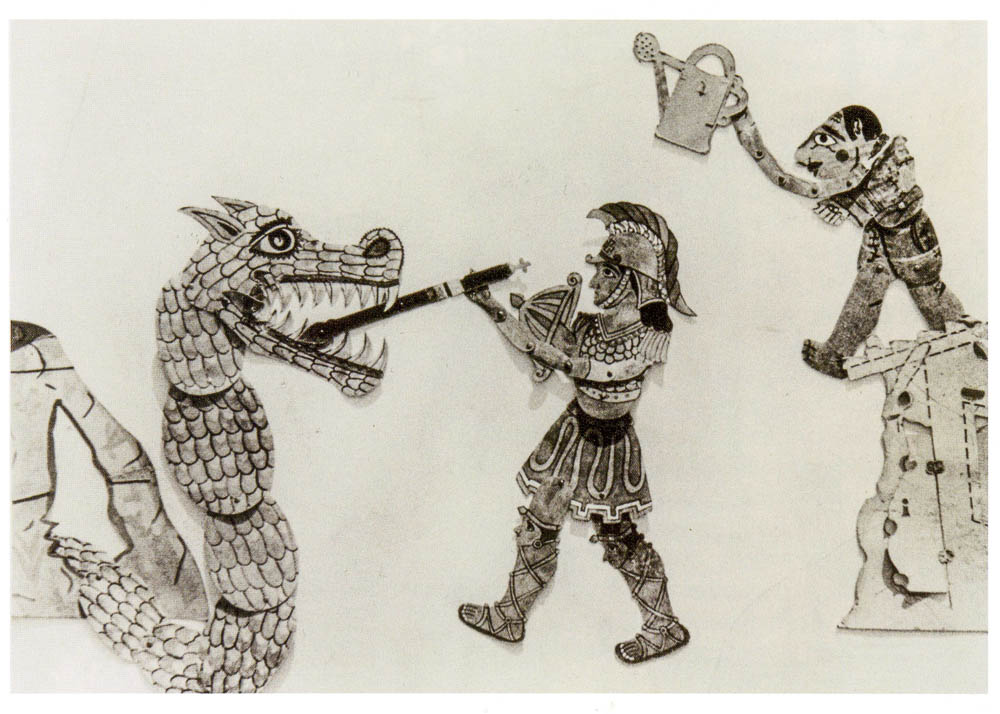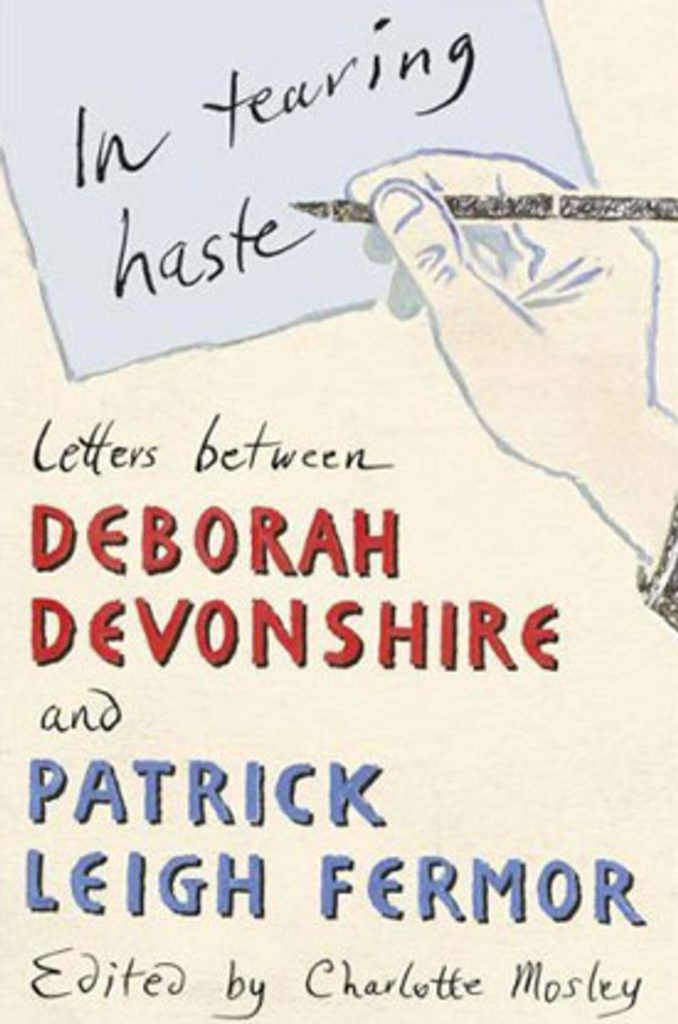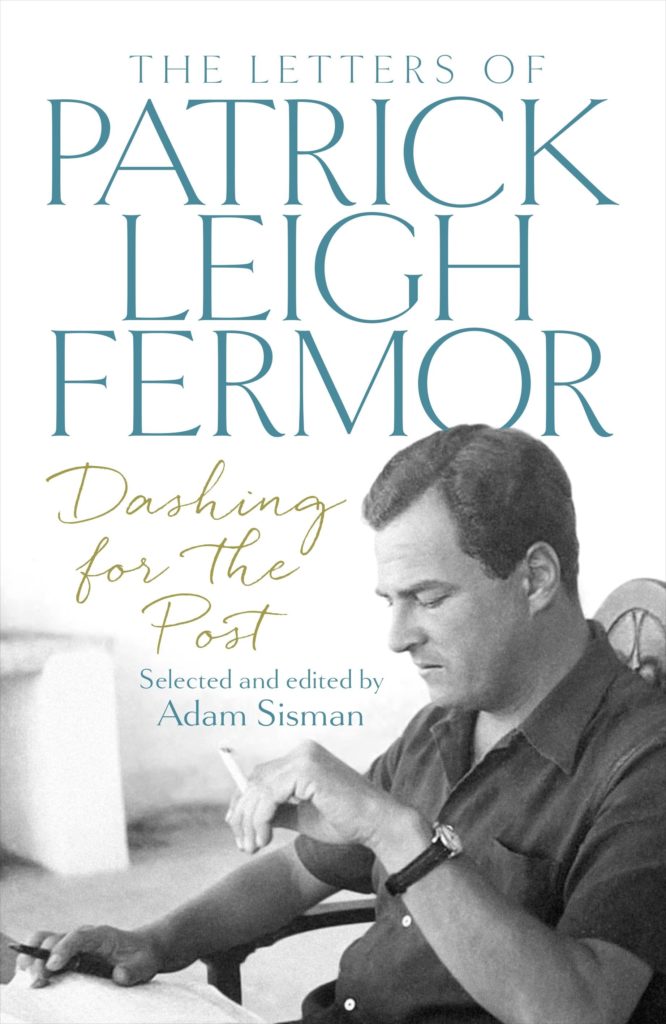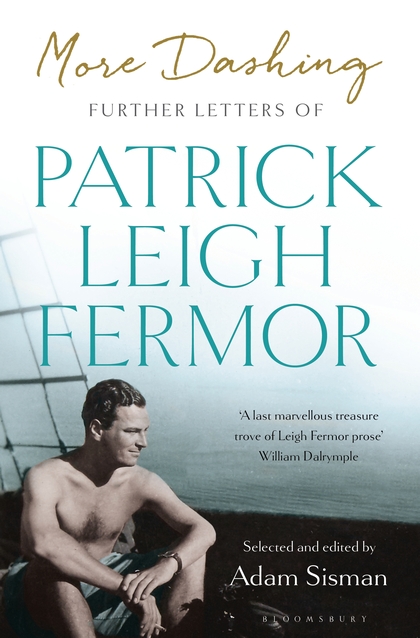The sifting of evidence to reveal more of Joan Leigh Fermor’s photographic life and legacy continues, this time through the letters of Patrick Leigh Fermor. Three volumes of letters have been published: In Tearing Haste – Letters between Deborah Devonshire and Patrick Leigh Fermor ((TH) ed. Charlotte Mosley, John Murray, 2008); Dashing for the Post – The Letters of Patrick Leigh Fermor ((DP) ed. Adam Sisman, John Murray 2016); and More Dashing – Further Letters of Patrick Leigh Fermor ((MD) ed. Adam Sisman, Bloomsbury, 2018). The first of these includes no letters to Joan, but makes passing reference to her on over 40 occasions. The other two collections include 36 letters to Joan and over 70 references to her; 23 of the letters date from the years up to and including 1960, when Joan probably gave up serious photography.
Insights into Joan’s photography are revealed through both the letters and the editors’ footnotes. Photography and related matters are mentioned in 12 of the total of 150 letters and references.
1948, October: Paddy, staying at the Abbey de Sainte-Wandrille, on 11th wrote to Joan: ‘Darling, I’m afraid you wouldn’t be allowed to take photographs here, as no women are allowed actually inside the precincts of the abbey….I would like to write something about this abbey, though, and must try to get some photographs from somewhere’. (DP p. 31) Two days later he mentioned a ‘Voodoo article’, possibly for publication in Horizon. If published, this may have included some of Joan’s photographs from their Caribbean travels in 1947. At the end of the year Paddy wrote about a ‘Maya article’, saying, ‘I want them to reproduce a photo of the Young Corn God and a really good Copan Stela, and the best and most representative modern Maya faces. Contact probably won’t know which is which. Could you… help choose the photographs which may not be labelled.’ (DP, p. 43-4) It is not clear if this refers to photographs Joan took in British Honduras, Guatemala, El Salvador and Nicaragua at the end of the Caribbean trip, or, perhaps more likely, to pictures by Costa Achillopoulos.
1949, February/March: Paddy asked Joan how her trip to Sicily with Peter Quennell and Hamish St Claire-Erskine was going – about the relationships in the trio, not about the photography Joan was there to do. (DP, p. 46)
1952, May: Paddy told a story of ‘Dreamy Joan, wandering in the Palais Royal [Paris] yesterday afternoon to take some photographs…’ to Diana Cooper. (MD, p. 61)
1952, Spring (?): Paddy wrote to Joan: ‘Vogue are reprinting the Jamaica article on the fifteenth of this month, which seems odd. I hope it means extra pennies. I wish they’d do the Greek one with your snaps.’ (DP, p. 67)
1956, May: In a footnote Mosley describes Joan as ‘the beautiful highbrow amateur photographer’. (TH, p. 11)
1965, June: Paddy wrote to John Murray, his publisher, about the photographs for Roumeli: Travels in Northern Greece. ‘I thought enclosed snap 546 – suggesting a bleak and blasted mountain landscape – might do for the Dilemma [the subject of a now lost letter]. Joan has had very bad luck with her Karayiozi snaps, but we are going to try again. What about 513, 575, and 587 for the Cretan part? When is closing time for photographs? Do ask Jock to use the one of me in Cretan Outfit…if anything, slightly underdressed for this type of snap!’ (MD, p. 202) It does not appear in the 2017 Folio Society edition.

1969, December: In a letter to Balasha Cantacuzene, Paddy said: ‘Our excuse for coming to Paris was to see the enormous retrospective exhibition of Alberto Giacometti sculptures, paintings & drawings: a wonderful feast. He died two years ago, and was a very old friend of Joan’s and later of mine.’ (MD, p.241)
1983: A footnote records that Paddy’s translation of George Psychoundakis’ The Cretan Runner (1955) ‘included over a dozen photographs of the participants by Joan Leigh Fermor’. (TH, p. 210)
1985, December: Paddy writing about the death of Manoli Paterakis referred to ‘Joan’s post-war photo [of Paterakis] in The Cretan Runner’. (TH, p. 235)
Mid 1980s: A letter to American photographer Milton Grendel, who was married to Judy Montagu (d. 1972), indicates a continuing friendship, though Paddy did not mention photography. (MD, p.348) A photograph of Paddy with Anna Venetia, the daughter of Grendel and Montagu, in Kardamyli in 1969 is earlier evidence of the friendship. (DP, pl. 9)
2006, October: Paddy wrote: ‘I was going through old papers yesterday, and came on a colour photograph of a pretty skewbald cat of Joan’s, fast asleep with its head on an open copy of Kim…and Joan’s specs across it too…It marvellously composed, an ideal vision of an afternoon nap, with the heroine of the scene, vis Joan momentarily off stage.’ The photograph, reproduced in black and white, is almost certainly by Joan. (TH, p. 369)

The three books include 92 photographs from Paddy’s life, a few include Joan, who was notoriously shy in front of the camera. A number of the pictures are by Joan, but only two are expressly credited to her, several other photographers are credited.The value of these letters in understanding Joan Leigh Fermor, photographer, is limited: they represent a tiny proportion of the nearly 10,000 letters postcards and telegrams in the Leigh Fermor archive; they are only one side of the correspondence; and the editors have selected them for their general, historical, literary, social and topographical, not photographic, interest. The selections are partial in both senses of the word. Nevertheless, they do provide some insights.
- Paddy shows little interest in Joan’s photography, except insofar as it relates to his own work. He does not ask her how her work is going.
- He refers to Joan’s photographs as ‘snaps’ (1952 and 1965). This sounds dismissive of the value of photography, and to modern ears it is. It might be excused as a reflection of time and class, but hardly – photography had long since been taken seriously.
- Mosley’s description of Joan as ‘the beautiful highbrow amateur photographer’ expresses perfectly the way in which she appears to have been seen by her contemporaries – beautiful first, photographer last.
- I’ve learned that: Joan was photographing in Paris in 1952; her photographs illustrated the translation of The Cretan Runner; and Giacometti was a friend, also probably Milton Grendel.
- The problems with the Karayiozi photographs may indicate Joan’s technical limitations. The photograph published in Roumeli is of a cut out puppet, not of a shadow puppet performance.
- The lack picture credits does Joan a disservice.



